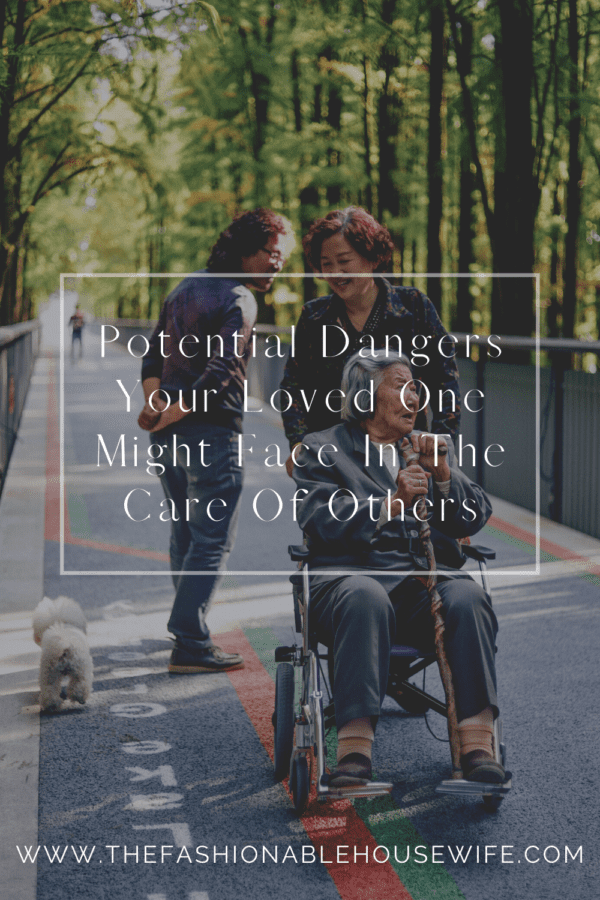
Making the decision to place a loved one in a long-term care facility can be difficult enough. Learning they might be a victim of abuse would be devastating.
According to the World Health Organization, at least 16% of people over aged 60 are victims of one form of abuse or another. Knowing the different types of abuse and how to take action to address it if you suspect your loved one is a victim is critical to the overall health and well-being of those we hold dear. Here are the most common forms of abuse facing this vulnerable population and how you can recognize the signs.
Who Is At Risk?
While we commonly think of the elderly as the most vulnerable, that isn’t the only group of people who often wind up needing to be placed in a long-term care facility. Afflictions such as physical limitations, cognitive impairments, mental illnesses, and communication barriers can affect people at any stage of life.
It goes without saying that this same group of people can be vulnerable at home, but in the event that they must reside in a care facility, you should know how to tell if they aren’t being properly cared for.
Abuse Categories and Common Signs
When it comes to vulnerable populations, there are 5 major categories of abuse to be aware of.
- Neglect
Neglect is the easiest form of abuse to observe. Signs that your loved one is being neglected by caregivers include frequently soiled linens or diapers, consistent weight loss not attributed to sickness, infrequent bathing, and bedsores from not being shifted often enough.
Should you notice any of these signs in your loved one, don’t be afraid to bring it to the attention of the staff or caregivers and follow up by contacting a law office that specializes in this form of abuse.
- Physical
The second highest reported form of abuse is physical. Physical abuse is categorized as any mishandling or act of aggression that causes physical harm to a person. It includes, but is not limited to, shoving, kicking, hitting, or rough handling.
Evidence of physical abuse isn’t always noticeable. Aside from the obvious marks, swelling, or broken bones, if your loved one seems to have an injury not consistent with hazards of their condition, follow up on it. Be especially prudent if your loved one tells you they are being physically abused. It’s in everyone’s best interest to not ignore reports or signs of physical abuse. You can file for a protective order to restrict any abusive communication. And if the abuser violates it, they can get a more serious punishment, but they retain the right to have a protective order defense attorney.
- Psychological or Emotional
Psychological abuse is the most common form of reported abuse, yet it is the most difficult to spot. Most people who are victims of this type of abuse aren’t able to identify that it’s happening to them. This becomes even more difficult if they have a limited capacity of communication.
Yelling, threats, isolation, or any behavior that makes a resident feel unsafe or unworthy is considered emotional abuse. If you notice an increase in anxiety or depression, or adverse reactions to certain caregivers, take notice. Sadly, as with other forms of abuse, your loved one may have been threatened into keeping quiet about this so if you notice a shift in their body language in the presence of certain people, look into it further.
- Financial
You guessed it. Financial abuse involves money and someone taking advantage of your loved one’s inability to manage their own finances. If you or your loved one notices money or belongings gone missing, or if money is disappearing from their bank account suspiciously, don’t ignore it.
Other forms of financial abuse are when caregivers convince the vulnerable person to give them money for whatever reason they see fit. Folks with limited cognitive capacity or those who are completely unaware of what’s going on around them fall victim more frequently and sadly, it’s often relatives that are the culprits.
- Sexual
Sexual abuse is perhaps the most uncomfortable form of abuse to talk about. It often goes unreported, but experts suggest that this form of abuse might actually be the most prevalent. Sexual abuse is “anything that constitutes unwanted or forced sexual behavior inflicted upon someone”.
Because sexual abuse is often underreported and difficult to spot, you should familiarize yourself with the warning signs. Flinching or fear of being touched, atypical sexual arousal, and irritation in the genitals are common signs of sexual abuse, and no matter how insignificant it may seem, if you suspect your loved one is the victim of sexual abuse, it is your duty to report it.
How Can You Help?
Learning someone close to you is being abused is a heartbreaking ordeal. While you can’t erase the events, supporting them while they recover from the trauma can help minimize the long-term damages.
Reporting and supporting are important, but taking action to prevent harm is your first line of defense. Know your loved ones needs and behaviors, create a plan with the care facility and caregivers for proper treatment, and follow up if you suspect anything is amiss.
Knowing the signs of abuse and how to address them is critical to the safety of not only your loved ones, but anyone who is considered vulnerable. Don’t hesitate to take action to prevent and prosecute such matters to the full extent of the law. After all, they’re depending on you.



